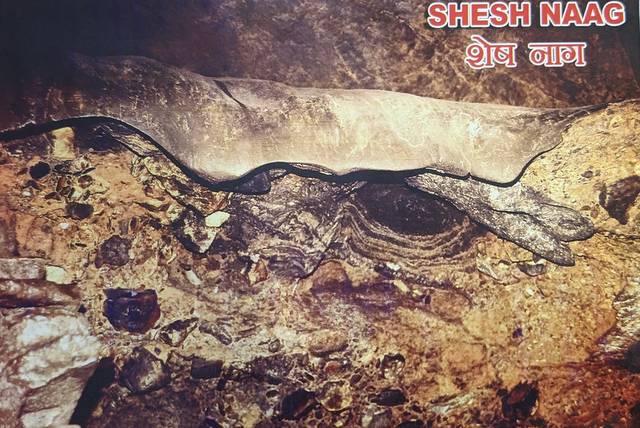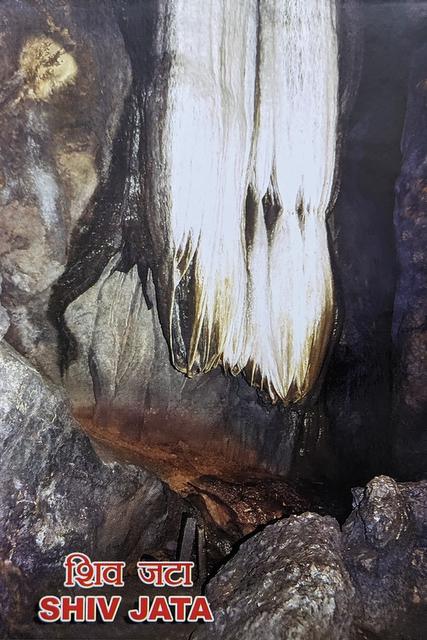Nestled in the Himalayas, in the state of Devbhoomi Uttarakhand, lies the entrance to the underground cave city known as Patal Bhuvaneshwar. It is believed that this massive underground city has internal paths which lead to Kailash Mansarovar, Char Dham, Kashi and Rameshwaram.
Spread across 160m and at a depth of 90m, the portal to the nether world invites all.
History of Patal Bhuvaneshwar
In the Treta Yug, Raja Rituparana of the Suryavanshi Dynasty is said to have visited this cave.
He was given a tour of this cave city by Sheshnag himself. In Dwapar Yuga, the cave was rediscovered by the Pandavas and Draupadi during their last trip across the Himalayas.
Later, in 1191 CE, Adi Shankaracharya too meditated in the cave premise. The priest family of the Bhandaris has been performing religious rites and looking after the cave temple premise since the time of Adi Shankaracharya. They also act as guides to the site. The cave has been mentioned in the Manaskhanda of the Skanda Purana.
Visiting Patal Bhuvaneshwar Cave
After an overnight stay in Chaukori, I left to visit Patal Bhuvaneshwar early morning next day. From the parking lot to the temple entrance, one has to walk a distance of 800 m. The railings of the path were adorned with bells and red forehead bands, welcoming the pilgrims to the site of divinity.
One has to buy a ticket and deposit all baggage and electronic gadgets in a locker. Mobile phones and cameras are not allowed within the cave temple premise. If required, prior permission from ASI has to be taken for photography and videography. You can also purchase the images from shops in the premise.

After removing the footwear, a group of 20 people (close to 5 families) was assembled and led into the narrow mouth of the cave with the help of Pandit Bhandari.
While holding the metal chain, crouching in the dimly lit entrance one has to climb down into a sharp 75-degree drop. Manoeuvring on the slippery pathway, crawling from one tunnel to another is definitely a survival of the fittest.
The oxygen level in the cave is very low. Moreover, the rate at which atmospheric oxygen gets replenished is very slow. Hence, pilgrims are split into small batches. In case you feel dizzy, make sure to inform Panditji (priest). They have a few oxygen cylinders inside the cave to help pilgrims acclimatize to the cave’s atmosphere.
Patal Bhuvaneshwar Cave
On reaching the floor of the cave, it felt as if the cave was extending endlessly on all sides. The floor was cold and one’s feet gets covered in a layer of damp greyish-black soil. On reaching the base of the cave, the guide starts the tour.
Sheshnaag
In Hindu culture, Sheshnaag is the mighty snake that carries the Earth on it’s hood. It is said that from it’s mouth, the entrance of the nether world or Patal Lok begins.

As soon as one reaches the floor of the cave, the limestone formation of the Sheshnaag welcomes the pilgrims. On the sides of the cave, one can clearly notice it’s long, sharp fangs while it’s skeletal frame is right below the feet.
Vasuki and the Yagna Kund
On the walls of the cave, the impression of the thin long snake Vasuki was visible. This snake rests on the shoulders of Lord Shiva. Right below the wall was a yagna kund (spot of a ritual sacrifice). According to Panditji, in this yagna kund King Janmajaya conducted a yagna to avenge his father’s death by killing all snakes on earth and patal lok.
Adi-Ganesh (Original form of Ganesh)
On walking further, one can view the limestone structure of Adi Ganesh. The structure looks like the body of a child without its head. On the surface, one can see 3 holes for the spine, breath and food respectively. Right above is another rock formation of a large Brahmakamal flower from which drops of water regularly nourish the structure below.

It is believed that this is the original form of Lord Ganesh, right after his head was severed. The drops of water from the Brahmakamal flower kept the body alive until another head was found to replace it.
Chardham (four divine abodes) and Ambarnath

A little ahead are the miniature cave structures on the walls and naturally formed small shiv lingam beside them. They were all placed at different heights. These were miniatures of Kedarnath, Badrinath, Ambarnath and Ambarnath Gufa.
Cave of Rishi Markandeya
On one side, there is the presence of numerous alleys of caves, one after the other. If one looks into the cave, one can observe a shadow of a rishi sitting in Padmasan. Panditji said that Rishi Markandeya meditated in this cave and left a visible presence of his subtle body.
The Gates of Patal Bhuvaneshwar
At a crossroad, one can see only one door open ahead while the rest were sealed naturally. Paapdwar (The gate of sin) was once open in Treta Yug. After the annihilation of Ravan, this door was closed.
Randwar (The gate of war) too closed after the mighty battle of Kurukshetra in Dwapar Yug. At the brink of Kali Yug, the Mokshdwar (The gate of liberation) of Satyug opened once again.
From the mouth of Dharmadwar (The gate of righteousness), one moves into the Mokshdwar and continues the tour of Patal Bhuvaneshwar.
Shiv Jata (Matted hair of Lord Shiva)
While moving towards the deepest accessible region of the cave, one walks right past the icy cold formation of Lord Shiva’s Jata (hair). The floor of the cave was slippery and cold. The Jata was half frozen while the other half was made up of limestone.

Right below the Jata was a naturally formed Shiv Lingam and 33 koti (types) Hindu Gods.

A small kund (pond) was also present. It is said that Vishwakarma (divine architect) himself created this kund. The rock formation of his hand was present right beside the pond.
Shiva Shakti Lingam
At the deepest accessible region of Patal Bhuvaneshwar lies the Shiva Shakti Lingam. Made up of Sphatik-Mani (crystal), the lingam represents the trinity – Brahma, Vishnu and Mahesh.
Airavat and Parijata tree
The ceiling of the cave has the formation of the footprints of the divine elephant Airavat. Surprisingly, there is also a living Parijata tree within the cave premise. In the fight between Lord Krishna and Indra, the tree remains stuck between the Earth and the nether world. Although it had no leaves, the tree had fruits.

Vridh Bhuvaneshwar Temple
After visiting Patal Bhuvaneshwar, pilgrims are encouraged to visit Vridh Bhuvaneshwar temple on the other side of the hill. Right beside the temple is a sculpture museum consisting of sculptures excavated in and around Patal Bhuvaneshwar.

You can explore the nearby pilgrim centres Berinag and Gangolihat. Berinag, located at a distance if 25km, houses an ancient Naag devta (Snake God) temple and picturesque tea gardens. At a distance of 13km from Patal Bhuvaneshwar is the Haat Kalika temple in Gangolihat. This temple is a Shakti Peeth established by Adi Shankaracharya more than a thousand years ago.
Mental and physical fitness is a necessity to explore the cave for an hour.Patal Bhuvaneshwar is a surreal experience, filled with divinity that one should not miss!
If you are planning a trip to Devbhoomi Uttarakhand, make sure to visit this intriguing ancient rock formation.
Travel Tips
Accommodation: There are a few guests houses and dharamshala are available in the Patal Bhuvaneshwar complex. More accommodation options ranging from resorts to hotels are available in Chaukori, at a distance of 37km and Berinaag, at a distance of 25km.
Best time to Travel: Patal Bhuvaneshwar is hard to visit during the monsoon as the oxygen level further decreases. The best time to visit is from the months of February to June.
Transportation: The nearest railway station is 154 km away in Tanakpur. The nearest airport is in Pantnagar at a distance of 244 km. Bus and Cab services to Patal Bhuvaneshwar are available.
This post is authored by Akshaya Vijay as part of the IndiTales Internship Program.
